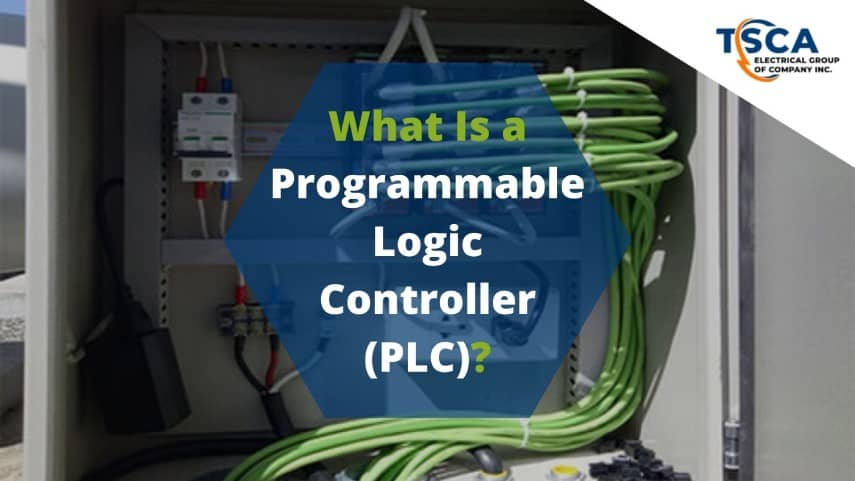In today’s society, we rely on automated machinery to perform many of our most critical industrial processes, from generating electricity to weaving fabric. Automation technology has allowed us to scale new heights of production and innovation. But our current level of automation wouldn’t be possible without a critical invention called the programmable logic controller (PLC).
What is a programmable logic controller, and how do these controllers help us run the many processes that our modern world requires? What are the pros and cons of PLCs? Find out while reading this article.
Our beginner’s guide to PLCs will introduce you to the basics of PLCs, talk about why these controllers are so important and provide a quick primer on how they work.
What Is a Programmable Logic Controller?
A programmable logic controller is a type of tiny computer that can receive data through its inputs and send operating instructions through its outputs. Fundamentally, a PLC’s job is to control a system’s functions using the internal logic programmed into it. Businesses around the world use PLCs to automate their most important processes.
A PLC takes in inputs, whether from automated data capture points or from human input points such as switches or buttons. Based on its programming, the PLC then decides whether or not to change the output. A PLC’s outputs can control a huge variety of equipment, including motors, solenoid valves, lights, switchgear, safety shut-offs and many others.
The physical location of PLCs can vary widely from one system to another. Usually, however, PLCs are located in the general vicinity of the systems they operate, and they’re typically protected by a surface mount electrical box. Skip to the end if you’re interested in seeing the electrical junction boxes that help protect PLCs.
PLCs largely replaced the manual relay-based control systems that were common in older industrial facilities. Relay systems are complex and prone to failure and, in the 1960s; the inventor Richard Morley introduced the first PLCs as an alternative. Manufacturers quickly realized the potential of PLCs and began integrating them into their work processes.
Today, PLCs are still a fundamental element of many industrial control systems. In fact, they’re still the most used industrial control technology worldwide. The ability to work with PLCs is a required skill for many different professions, from the engineers designing the system to the electrical technicians maintaining it.
Advantages of Using PLCs
PLCs have been a standard element of industrial machinery design for many decades. What advantages do PLCs offer that make them such a popular choice?
- PLCs are fairly intuitive to program. Moreover, their programming languages are simple in comparison to other industrial control systems; which makes PLCs great for businesses that want to minimize complexity and costs.
- Are a mature technology with years of testing and analysis backing them up. It’s easy to find robust research about many different PLC types and comprehensive tutorials for programming and integrating them.
- PLCs are available at a wide range of price points, including many extremely affordable basic models that small businesses and startups often use.
- Are extremely versatile, and most PLC models are suitable for controlling a wide variety of processes and systems.
- PLCs are completely solid-state devices, which means they have no moving parts. That makes them exceptionally reliable and more able to survive the challenging conditions present in many industrial facilities.
- PLCs have relatively few components, which makes them easier to troubleshoot and helps reduce maintenance downtime.
- PLCs are efficient and don’t consume very much electrical power. Therefore, this helps conserve energy and may simplify wiring considerations.
Drawbacks of Using PLCs
No technology is perfect for every scenario, and there are some applications for which PLCs aren’t the best choice. Let’s look at some of the most significant potential drawbacks of using PLCs.
- PLCs have less capacity to handle extremely complex data or large numbers of processes that involve analog rather than discrete inputs. As manufacturing facilities become more integrated and involved, increasing numbers of them may shift toward a distributed control system or another alternative industrial control method.
- PLCs From different manufacturers often use proprietary programming software. This makes PLC programming interfaces less interoperable than they might be, especially considering that their programming languages share common standards (see below).
- PLCs, like many other types of electronic equipment, are vulnerable to electromagnetic interference (EMI). Furthermore, they can also experience other kinds of common electronics malfunctions such as corrupted memory and communication failures.
Contact us today to learn what we have to offer or read more of our blogs.





